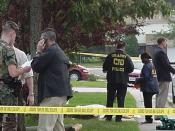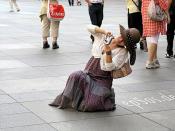When photographing a crime scene the three-step approach is a follows:
1. Take overview photographs to show the overall scene.
2. Take mid-range photographs to show the exact location of evidence.
3. Take close-up photographs to show the more intrinsic details of the evidence.
It is best to use this method working from the outside of the scene to the smallest pieces of evidence. This will provide a more complete photographic image of the scene and all of the related evidence (Staggs, 1997).
If you are photographing a traffic fatality after you have completed all of your preliminary work, such as getting equipment ready, walking through the crime scene, etc. you would start by taking some photographs of the overall wreck scene. You would try to get all of the vehicles involved and, if any are present, the skid marks leading up to the wreck site. "Show where the vehicles came to rest and in what position" (Staggs, 1997).
You would want to show the relationship of each vehicle to one another. The photographs should also include a permanent, recognizable landmark to help in relating as to the exact location of the accident. These photographs would be taken from several different angles so as to get a complete overall felling of what took place by looking at the photographs at a later date. Next you would start to take your mid-range photographs which would include taking photographs of each vehicle involved individually. Photographs would be taken from the view each driver had as they approached the accident. Try to show any view obstructions that could have played a role in causing the accident. If there were any witnesses you would photograph the view from where the witness observed the accident.
Lastly you would take the close-up photographs. These would include...



Great
It was easy to read, in-depth, informative, and not boring! I congratulate you on acheving all these standards.
2 out of 2 people found this comment useful.